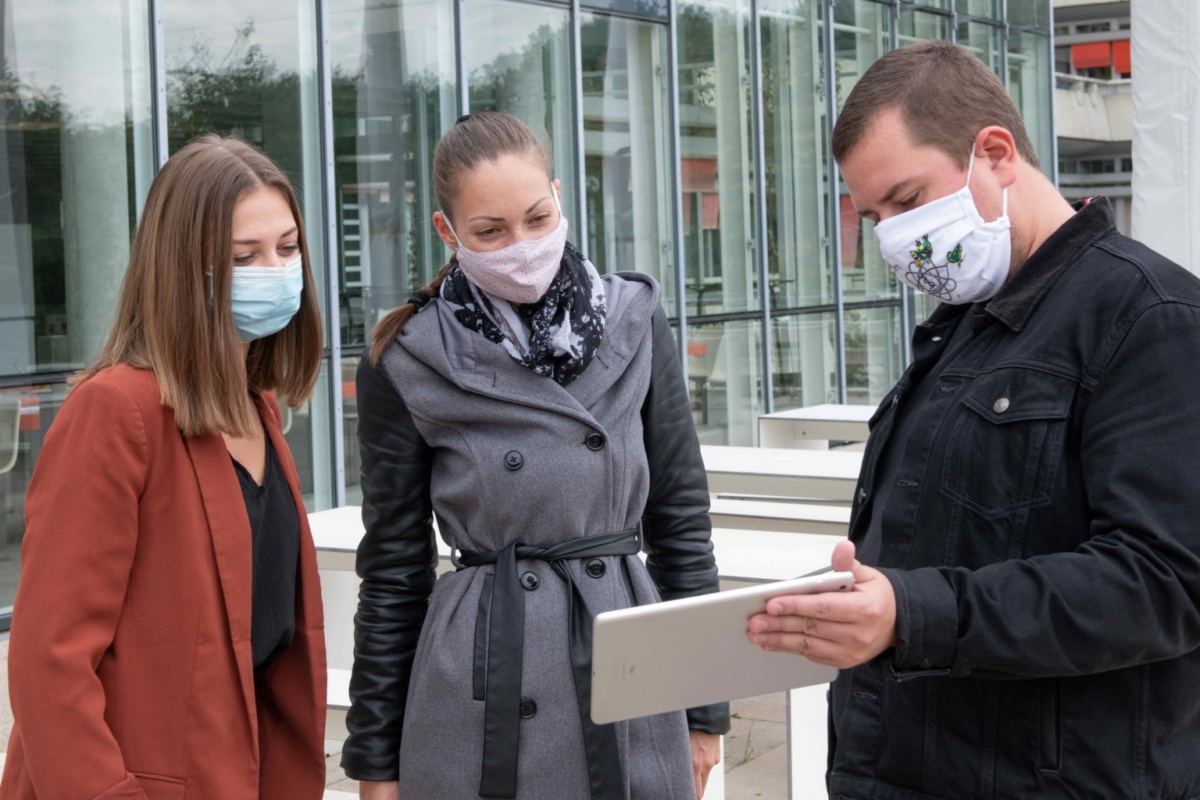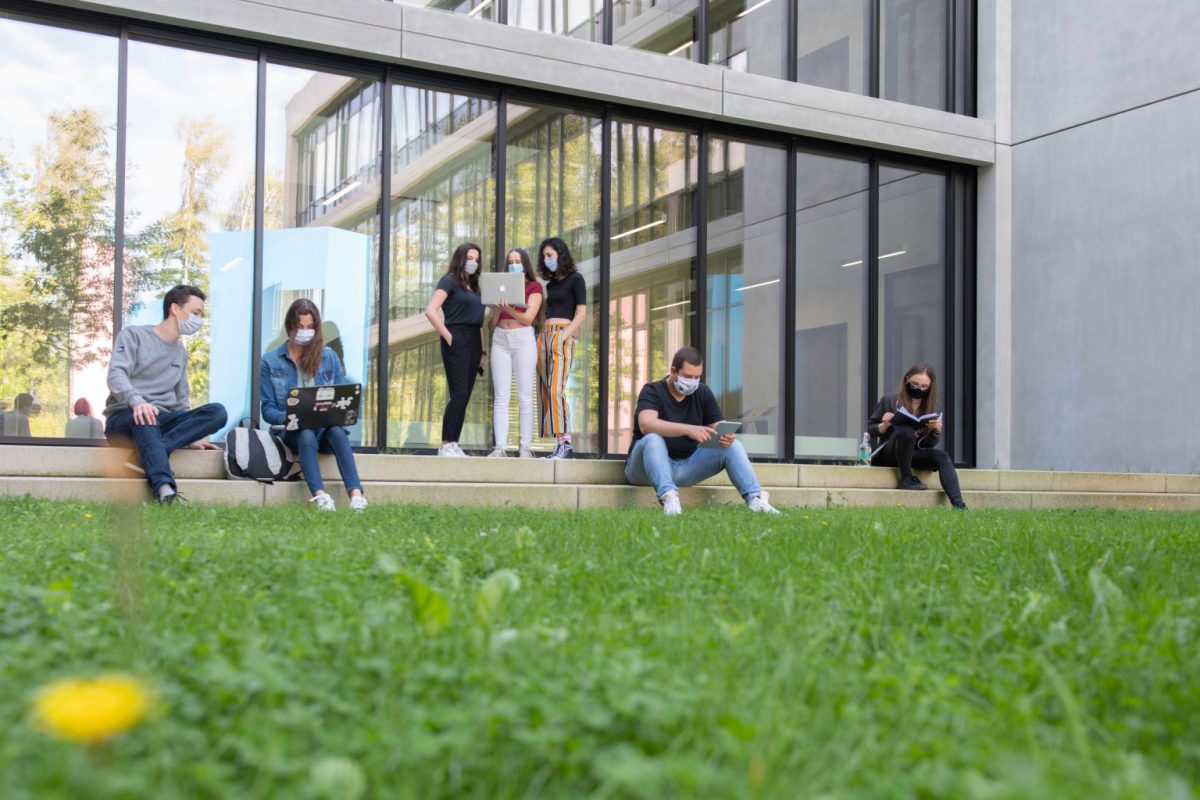We are in that time of the year again: September, the start of the new academic year! In normal times, this means a new beginning, full of hopes and renewed energies. But in 2020, it is an odd beginning, that feels more like a prolongation of the ‘locked’ spring we went through a few months ago. Indeed, many things have changed: masks have become an integral part of our outfits; not shaking hands or hugging is now considered as a responsible behaviour and, one way or another, we have accepted that this is the reality we have to live in for yet months to come.
In July, YERUN published a Reflection Paper on the World of Higher Education after Covid-19. Based on the experiences collected from our members during the months of lockdown, the paper explored three possible “horizons” for universities. Now we can answer the question: which horizon are we in now? According to the evidence collected across our network, we find ourselves somewhere in between Horizons 1 (“Business as usual, with important twists”) and Horizon 2 (“A new normal for longer”): control over the crisis has been re-established, and universities have “more or less” gone back to business as usual. Some face-to-face activities have been restored, albeit in line with physical distancing rules, while selected virtual elements initiated during confinement are co-existing with in-person education. At the same time, contingency plans are now fully in place, to make universities ready for the risk of a second wave of infections. In fact, those temporary structures that were initially set up to face the emergency will stay in place for much longer than originally expected. Similarly, the infrastructures for online learning and teaching are constantly being refined and overall, the virtual way of working has been strengthened. But let’s have a look at concrete examples: what is really going on at young universities? Overall, we know that universities are ready for a hybrid semester: our new academic reality.
A special attention to first year students in this “mosaic” semester
Starting university in a virtual format can be very challenging, especially for freshmen who are not familiar with the new environment. At the University of Bremen, the first days will certainly be a mixture of online and face-to-face events for the new students. “Despite the circumstances, we want to make a great start possible for our freshmen and welcome them so that they feel at home at the University of Bremen right from the beginning,” says the President, Professor Bernd Scholz-Reiter. The winter semester is to be hybrid, with a mixture of face-to-face and digital teaching formats. The aim is that small groups of students can go on campus – a maximum of around 20 to 25 percent of the 19,200 students will be allowed – so that the distancing and hygiene regulations can be adhered to, while students who are at home will be able to digitally partake in lectures and seminars. “Our new students in their first semester are definitely in the pole position to take part in face-to-face classes on campus,” says Scholz-Reiter.
At the University of Konstanz, the aim for the winter semester 2020/2021 is to provide as much on-campus teaching as possible within the hybrid teaching format that has been in place in the summer semester. In order to identify the needs of various groups of students, the university conducted internal course evaluations along with special surveys for students and lecturers. On the basis of both these findings and the experiences gained in the summer semester, specific measures are being developed for implementing the hybrid semester. The aim is to create a certain level of normality in line with the state provisions and the corresponding distance and hygiene regulations – especially for first-semester students who have to find their way in a new situation under the difficult conditions of the coronavirus pandemic, as well as for students who will graduate soon.

Also at Ulm University, the most likely model at this point is a “mosaic semester” – a much nicer word to indicate a hybrid semester with its mix of on-campus and online courses. “In the winter semester, we want to combine the best of both worlds: especially courses with practical elements and those that are very interactive will be held on campus as much as possible. Other formats such as lectures with a large number of participants can often be held online quite well. Particularly for our first-semester students we aim to offer the best possible study conditions with as many on-campus elements as possible”, explains Professor Olga Pollatos, Vice-President for Education at Ulm University. However, to be able to react to potential setbacks in the containment of the coronavirus pandemic, online versions will be prepared where possible as backups for courses planned on campus.
.
.
.
Ensuring students’ wellbeing and adherence to the rules
Moving to the UK, the recent “rule of six” regulation introduced by the government further complicates things, as it reduces even more the possibility for in-person social events, although larger groups for teaching and for living in student households are permitted. Universities have to manage social distancing requirements while working closely with the police to inform them in case of breaching the ‘rule of six’. Brunel University London’s Vice-Chancellor and President of Universities UK, Prof. Julia Buckingham said in a recent interview that “inevitably there will have to be much more emphasis on the virtual than I think we recognised even a week ago.” Prof. Buckingham also explained that universities are now “modifying their plans” to keep them within the law, but she said Brunel’s Student Union had reworked their ‘Welcome Week’ social events so that “small group” activities can take place on the university campus. The main worries concern the impact that this situation can have on students and their mental health, a point that Prof. Buckingham stressed in her interview and on which Brunel has been very proactive.
The new hybrid model goes hand-in-glove with a strengthened student-centred approach
At the University of Essex, a dual-delivery approach will be used for all courses: face-to face learning, tutorials and group work are blended with a range of virtual lectures and other online activities. Students are put at the heart of the university’s thinking and providing lots of different ways for them to discuss, debate and tackle key issues together. This approach also gives a built in way to move to off-campus delivery at any point during the year, which means less disruption and ensures students’ wellbeing, whatever the circumstances. This is not an online degree, but a way to deliver teaching that will ensure the continuity of education for all students.
Pompeu Fabra University has put in place strong support mechanisms for students, with a stronger role for tutors and mentors as well as with the provision of virtual spaces for horizontal socialisation. Moreover, all students will have the SAP (Psychological Counselling Service) at their disposal, which provides specific support, especially for situations of special needs, and professional counselling, provided by the Career Services, which supports and advises students on employability. UPF recognises as well that one of the challenges of hybrid teaching is the assessment, especially for those subjects that require thorough supervision during the exam. For this reason, the university has opted for continuous assessment and a student-centred approach, which means that the student carries out several evaluable activities and receives feedback on these activities throughout the term.
Also the Universidad Carlos III de Madrid has approved its new hybrid teaching and learning model for this coming academic year, which combines in-person classes with synchronous and interactive online instruction, ensuring quality teaching and complying with health and safety measures.
The University of Antwerp will be offering a mix of educational activities in the 2020-2021 academic year, with as many classes as possible on campus, plus some online activities. UAntwerp is opting for combinations of different teaching methods, and is therefore investing heavily in blended learning: face-to-face classes on campus in small groups, online learning activities, self-directed learning, collaboration, assessments and feedback. In this mix of intensive face-to-face learning and distance learning, the focus is always on the student. “Special attention will be paid to first-year students who have just made the switch from secondary school to university”, says Rector Herman Van Goethem. “We want to welcome them on campus whenever possible, so that they soon feel at home at our university and also have the chance to establish new circles of friends.” Safety and hygiene are an absolute priority. The physical distancing rules will take priority, but face masks/shields will have to be used for activities that cannot take place following the distancing rules.
Online opening ceremonies setting the tone for the year ahead
At the University of Eastern Finland, the academic year was opened on 3 September, in an online format. As much in-person teaching as possible will be offered to new students to ensure their commitment to the university and to their student community. Otherwise, the main mode of study this autumn will be online, except for courses that are impossible to organise online. In-person teaching is organised with safety in mind. A maximum of 50 people, including the teacher, may be in the same room at a time, and with people keeping a safety distance of a minimum of 1.5 metres.
At Maastricht University (UM), the motto “On campus where you can, online where you have to” has been followed from the very beginning, with the opening ceremony of the Academic Year taking place in a hybrid format. On Monday 31 August, UM President Martin Paul led a special ‘coronavirus-proof’ version of the annual event in front of a few invited guests, a much larger audience following the proceedings via a special livestream and a virtual keynote on “After the storm – how corona could change universities” by Harvard professor Eric Mazur.
Despite the challenges that the new academic year will bring, at YERUN we are convinced that the resilience of our universities will once more prove its strength. Therefore we wish to all of our members and colleagues across Europe a great academic year! If it is true that sometimes less is more, then may this year be one of less physical contact but also of more cooperation, more exchanges and more learning.
Cover picture by Elvira Eberhardt/Ulm University










